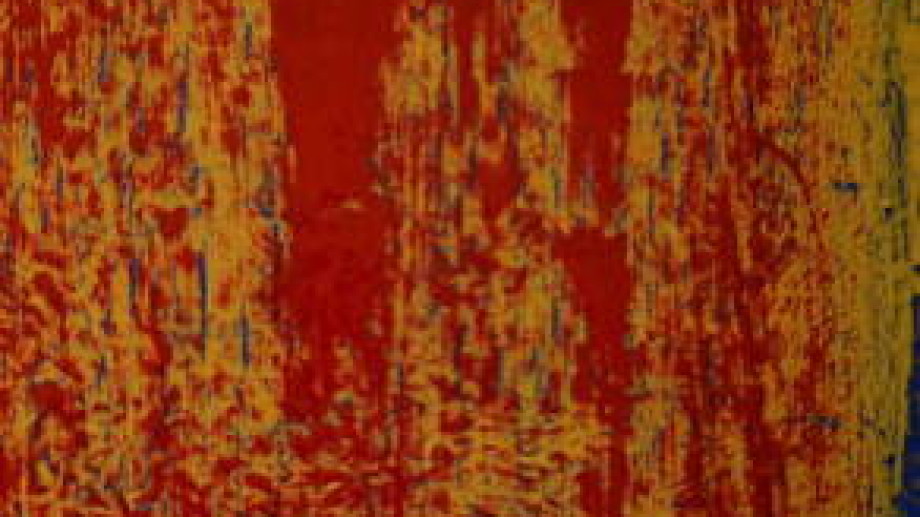
David Gatten's The Extravagant Shadows
Moviegoers, like other kinds of humans, like categories. Before a night at the theatre or curled up on the couch the debate about what should be seen often begins in broad strokes. What genre? Are there subtitles? Who is in it? Who directed it? In this way the perfect film slowly takes form and because of this predilection for going from vague to very specific, festival programmers know it is in their interest to give a general idea of what to expect. The New York Film Festival is no different. Though not always accurate, it is easy to make assumptions about what will be in each section. The Main Slate will probably have largely narrative films. Cinema Reflected will train its documentary lens on film’s artists. Masterworks will bring legends from the past back to the big screen. Midnight Movies provides thrills, chills and a late night experience.
Then, there is Views from the Avant-Garde. The section is relatively young, just turning 16 this year, but considering that Amos Vogel was one of the festival’s founders its appearance was less an addition than a reclamation of its heritage. Without it, the festival was still one of the world’s premier film events, but with Views it could fulfill the promise of Vogel’s Cinema 16, which showed early work from John Cassavetes and Jacques Rivette as well as Maya Deren and Stan Brakhage. In keeping with this tradition, Michael Haneke’s Palme d’Or winning Amour will let out just in time to head over to David Gatten’s The Extravagant Shadows.

Jeff Preiss' Stop
Gatten’s film, which shows the filmmaker painting a window with different pigments in real time for three hours while literary excerpts appear on screen, is a beautiful discourse on language and time. Asking just what makes something like Shadows avant-garde and the fishing documentary Leviathan not only exposes the difficulty programmers face with the term “avant-garde.” Talking about its cinematic incarnation is only made more difficult by the splintering timelines of the art world at large, from which the term in its modern usage was borrowed, and the film world in particular. The historical moment dominated by European Modernists like Fellini, Bergman, and Antonioni occurred at the same time as the decline of the Modernist project in other media. Similarly, the avant-garde in film, as disparate as it is, has often been concerned with a different set of issues than the original group of artists to whom the moniker was applied. While it is always dangerous to try and explain what connects films as varied as those in this year’s Views, a working definition begins to appear even between works as different as Stop and The Extravagant Shadows. There is a rejection or subversion of the narrative arc coupled with a deeper investigation into the nature and construction of an image. These are not meta-films in the sense that they are about films, but rather that they are about filmmaking.
Avant-garde work is not just defined by what it does, but also by how it is viewed. As Bradford Nordeen noted while writing about last year’s edition, a structure has been built up around experimental cinema replete with galleries, grants and museums. These types of films interrogate cultural assumptions about looking at an image at the same time that they operate within their own codes of viewing conduct. This, however, is the very reason why works like Gatten’s must be sought out in the theaters. In a gallery, spectators are almost never stationary, passing from one exhibit to the next without lingering too long at any one piece. They must see as much as possible before museum fatigue sets in. When the spectator leaves the theatre, they do so in full knowledge that they are breaking with a specific experience, not simply moving on to another piece.

David Gatten's The Extravagant Shadows
It is under these conditions that avant-garde film takes on such a rarefied air. The specificity of their experience, the need to view them on their terms and their relative rarity when compared to the films that come out in chain theatres already mark them as requiring a degree of at least physical and possibly mental preparation. Inevitably, this means that these works seeking to interrogate the viewer are limited to those who are willing to be questioned. Certainly, bit-by-bit, some of the techniques and innovations appearing in the avant-garde will eventually make their way into cinema’s mainstream and so to a wider audience. This is not enough. A work like The Extravagant Shadows, revolving around language, color, time and mise-en-scène, is a revolution unto itself. Perhaps the avant-garde cannot stage interventions in the local multiplex, but the revolution can be screened. What’s more, it can still shock, mystify, and finally open up a world that is in operation behind the way people interact with the images that dominate their lives—but you have got to see it to believe it.
Views from the Avant-Garde begins tonight at 6:00pm with Free Amphitheater Programs and continues through October 8. David Gatten's The Extravagant Shadows screens October 5 at 8:30pm.
Blair McClendon is a member of the NYFF Critics Academy program. You can follow him on Twitter at @GoodbootsFilm.



